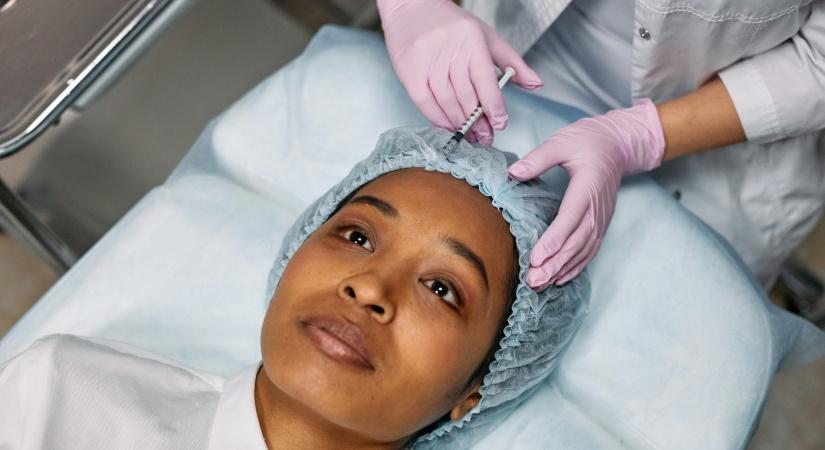Cover Story
Will the curve of India's plastic surgery business rise or fall?

Facial remodelling is undertaken to manage signs of ageing, and addressing scars and defects from trauma or birth
By N. Lothungbeni Humtsoe
February 20, 2024 (IANSlife) Life has been easier since the advent of the internet but it is also a bane. The beauty industry is unquestionably one of the hardest hit. The mushrooming number of social media influencers and sponsored content published online has transformed people's perceptions of beauty, resulting mostly in unrealistic beauty standards. South Korea and the United States have consistently ranked first in plastic surgery and facial remodelling. How far is India in its efforts to firmly establish a beauty standard, or will it ever change?
With a comprehensive background in ophthalmology and extensive training in both India and the United States, let's find out what Dr. Sneha Shah, an aesthetic surgeon, has to say about the evolution of beauty trends in India.
Why is facial remodelling necessary?
Dr. Shah: Facial remodelling is commonly undertaken for managing signs of ageing, and addressing scars and defects from trauma or birth. It can be a part of the gender confirmation process. It may also be done to enhance self-esteem and for social and professional reasons. Although it is a personal choice, it must be embarked upon, after consultation with a professional and understanding all the facets of the treatment.
In recent years, looking ideal or following a specific trend has become quite important for a certain age group. In comparison to other Asian countries where following a beauty standard is under debate, how far is India from significant facial reconstruction?
Dr. Shah: India has an ethnically diverse population, hence having a beauty standard is not possible. Historically, we have looked at the West, as a benchmark. The Millenials and Gen Z are being more and more influenced by the East via exposure to media. It's not just women, but also men who are seeking these treatments and this is only going to increase.
But still, I would say India still has a long way to go. While minimally invasive procedures like fillers, botox, dermabrasion, and vampire facials have become commonplace, the acceptability of surgery is only now starting to increase.
What is the most common reconstruction procedure that people demand?
Dr. Shah: As an Oculoplastic surgeon, most commonly I get queries for Blepharoplasty, which is an under-eye bags procedure, Ptosis correction which is a procedure for droopy eyelids, and xanthelasma treatment.
Tell us the intersection of artistry and medical expertise in facial aesthetics, as seen through your practice.
Dr. Shah: It’s funny you should ask this question, because the opening slide for many of my presentations reads, “Where science meets art”. If we look at the history of facial aesthetics and its journey over time, it has evolved greatly. Earlier we thought that art follows no rules, but with greater understanding, we realise that everything, even nature follows rules. Like for example, the golden ratio, which is present everywhere in nature, and makes everything look beautiful. Understanding this and in turn, applying it scientifically to facial aesthetics has made us better at achieving our goals.
What are the latest advancements in oculoplastic surgery and facial aesthetics and how it enhance patient outcomes?
Dr. Shah: There are plenty of new technologies, simple and complex. Some apps can predict the way you will age, and what you may look like when you are say 40 or 70. Similarly, apps can mimic what one can expect after the use of a filler or botox in a particular area. These help greatly in patient counselling, especially initiating treatment-naive patients, as they can now visualise the expected result.
Then there are the more advanced technologies such as 3D imaging and 3D printing, GPS, and navigation systems making procedures more precise, safe, and accurate.
We are aware of innumerable instances where the facial reconstruction process has gone wrong. How would you advise someone looking for the best surgeon and treatment plan?
Dr. Shah: Well, Google is both a boon and a bane. It increases awareness of the procedure and its potential for complications. When we are counselling patients and taking their consent for the procedure, we always explain to them the possibility of complications and their probability. I encourage them to read all the provided information and ask as many questions before the surgery. Choose surgeons based on their qualifications, training, and expertise. Pre and post-pictures are a good guide. The course of action is finally decided by the patient and the surgeon after consultation and discussion.
What is your outlook for the practice of facial reconstruction in India over the next few years?
Dr. Shah: It is definitely on a rising curve, there are no two questions about that. There are two aspects. Firstly, with growing awareness, accessibility, and affordability, Indians can go beyond what is essential, and pay more attention to health and beauty. Secondly, India is growing as a hub for facial aesthetics and reconstruction, receiving patients from across the globe.
What are your ideas on current beauty standards and whether they are vital to follow?
Dr. Shah: Beauty standards are constantly evolving as is our understanding of beauty. Though the “latest trend” may dictate the demand and provide the flavour, the essence of treatments should focus on creating a healthy, natural look. In my practice, the mantra is “A Youthful You” and I think one should not lose track of that.
(This article is website exclusive and cannot be reproduced without the permission of IANSlife)
N. Lothungbeni Humtsoe can be contacted at lothungbeni.h@ians.in


